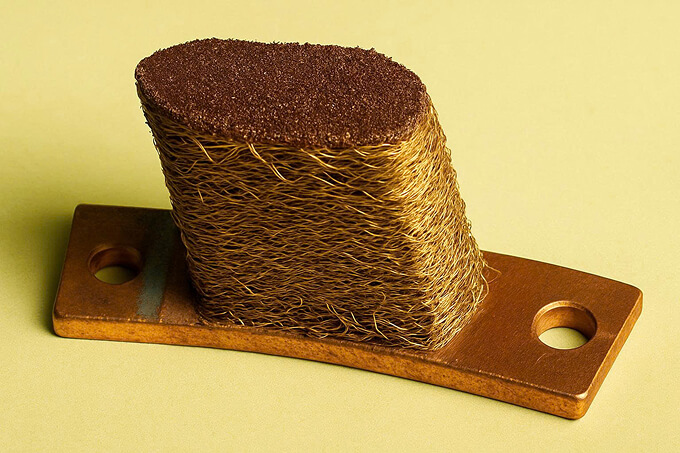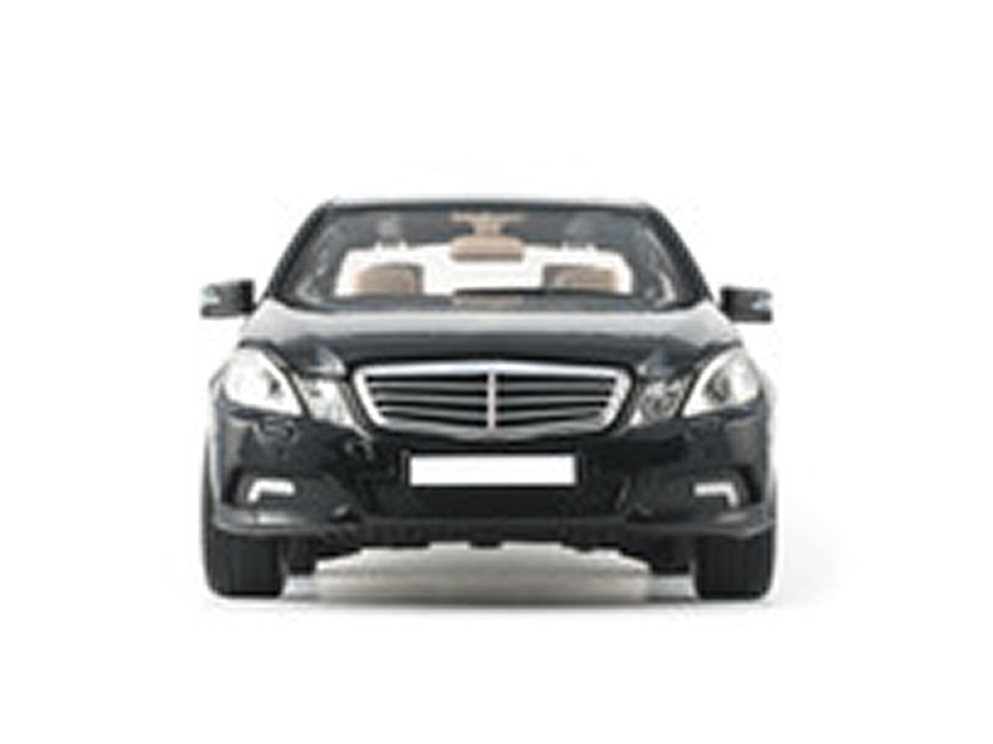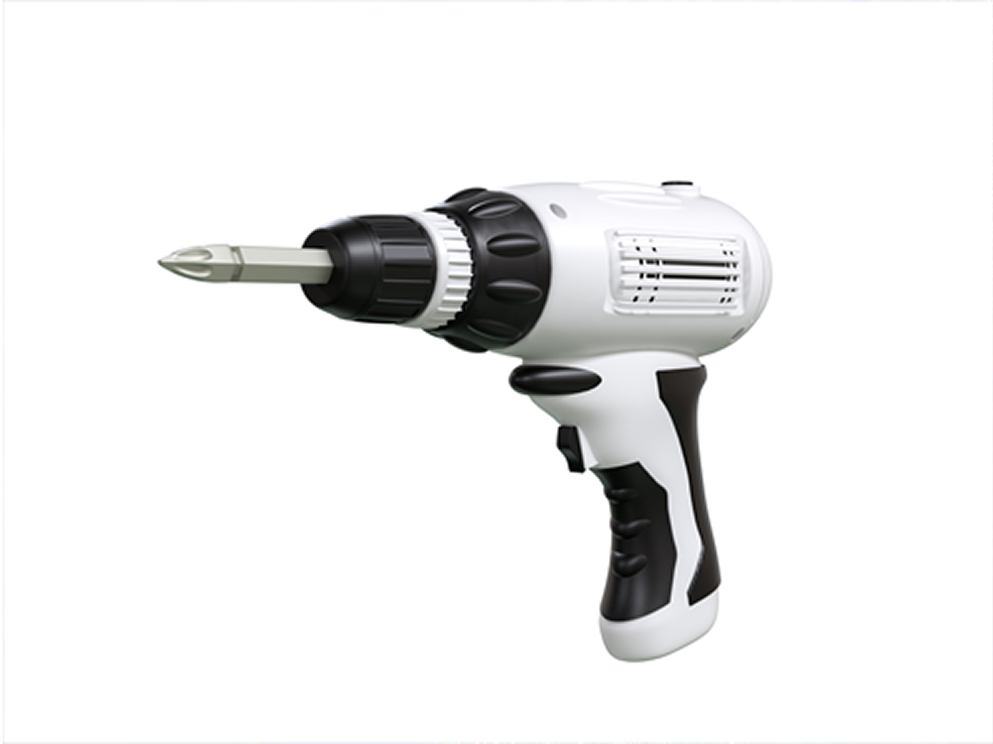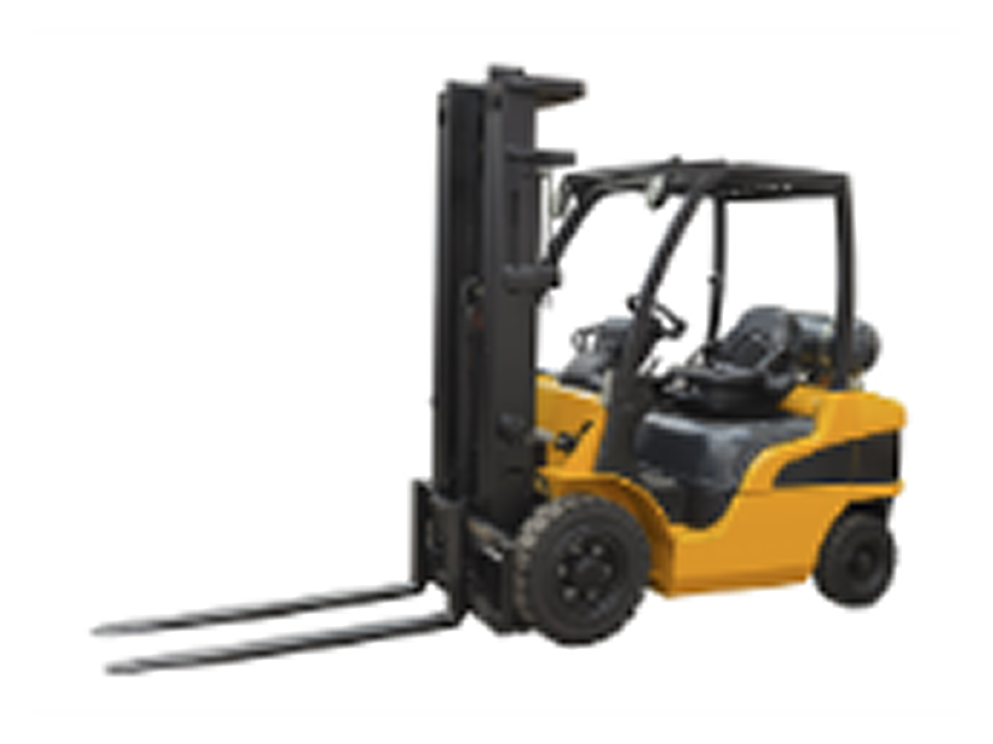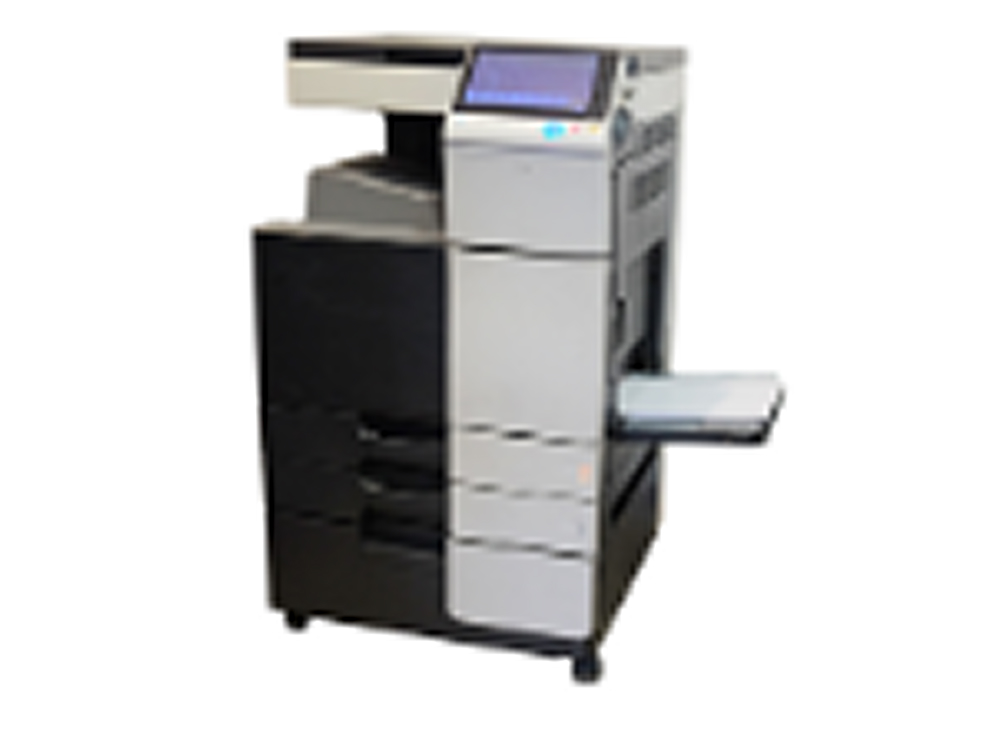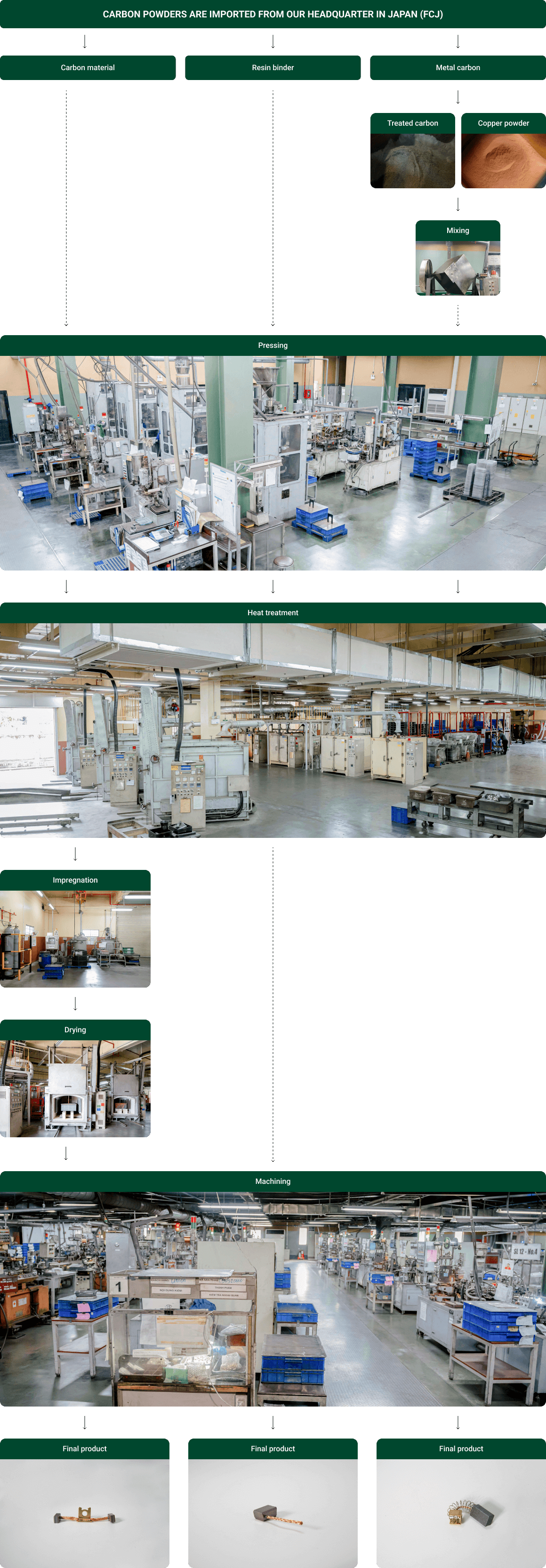Origin of the name
The name “carbon brush” is often mistaken for carbon paper or carbon fiber, but it is called a carbon brush in the sense that it is a brush made of carbon, not paper or fiber. The name “brush” makes one think of a bundle of bristles like a toothbrush or paintbrush, but the reason can be found in the history of motors.
Early electric motors and generators, invented in the mid-19th century, used brushes made of bundled copper wires (copper braided brushes). Subsequent inventions replaced them with blocks made of graphite (carbon). Therefore, the “brush” remains as the name, and it continues to be referred to as a carbon brush.
Role of carbon brushes
Carbon brushes come into contact with the rotating parts of a motor or generator and perform the function of energizing while sliding. From the viewpoint of purpose of use, carbon brushes can be roughly classified into rectifying carbon brushes used for DC motors and current collecting carbon brushes used for slip rings. In addition to its role of carrying current, the rectifying carbon brush is required to have rectifying performance to suppress the generation of sparks. On the other hand, the role of the carbon brush for current collection is to energize the rotating slip ring.
Carbon brush grades
| Grade | Manufacturing method | Main applications | Note |
| Electrographite grade | Graphitizing by high temperature (2,500°C or higher) after baking raw materials. | Large and medium-sized industrial motors | Expensive |
| Natural graphite grade | Baking using natural graphite as the main raw material | High speed slip rings | Low friction |
| Carbon-graphite grade | Baking using artificial graphite as the main raw material | Power tools and small AC machines | High load, vibration, braking, noise prevention |
| Resin-bonded grade | Heat treatment at the resin’s curing temperature using synthetic resin as binder | Vacuum cleaners and small DC machines | High speed |
| Metal-graphite grade | Sintering mixed raw material of metal and graphite | Automotive electronics and small DC machines | Low resistivity |
Carbon brushes in these places
Vacuum cleaners, juicer mixers, hair dryers, sewing machines, pumps, high pressure washers, etc.
Current collectors for overhead wires, slip rings, general DC machines, industrial motors, etc.


